 |
 |
| current issue |  |
past issues |  |
send a letter/news |  |
address update |  |
advertise |  |
about us |  |
alumni home |
| Winter 2007 |

|
| Departments |

|
| Alumni News |
| Alumni Profiles |
| Book Reviews |
| Campus Currents |
| Class Notes |
| Guest Column |
| History Page |
| Letters to the Editor |
| Obituaries |
| President's Column |
| University Research |

|
| Department Archives |
| Table of Contents |
|
Search UNH Magazine:
|
Previews
Books, music, art, theater, film, and danceby Anne Downey '95G
Evil Incarnate: Rumors of Demonic Conspiracy and Satanic Abuse in History, by David Frankfurter
This Vast Book of Nature: Writing the Landscape of New Hampshire's White Mountains, 1784-1911 , by Pavel Cenkl '94G
Overviews:
Scott Laliberte '89
Patricia Lynne Grace Cummings '73
Robert M. Collins '78
Donald A. Wilson '67G
Geno Auriemma with Jackie MacMullan '82
Fred Metting, UNH associate professor of EnglishAlso of Note:
Paula Wanzer '71
Suzanne Portnoy '83
Val Dusek, UNH professor of philosophy
Evil Incarnate:
Rumors of Demonic Conspiracy and Satanic Abuse in History
See at amazon.com
In 1987, David Frankfurter, a professor of religious studies and history at UNH, read an article in the Village Voice about the sentencing of two Texas women accused of satanic ritual abuse at the day care center where they worked. By 1991, "America was gripped by widespread panics about Satanic cults, which were allegedly abusing children," he writes, "impregnating girls for infant sacrifice, brainwashing their adult victims with multiple personalities, and controlling the highest levels of government."
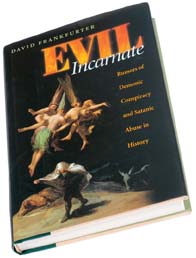
Frankfurter recognized a pattern in the descriptions of evil that emerged from the trials. There have been similar accounts throughout history: Roman rumors about Christians who sacrificed infants and were sexually perverted; European witches in the 15th to 17th centuries who had sex with demons and wreaked havoc on villages; Jews who captured Christian children for ritual sacrii-Ôø‡ces in medieval and early modern Europe.
When allegations of evil conspiracy take hold, writes Frankfurter in this brilliant new book, they are about "Otherness," where people imagine "an upside-down world that inverts our own." The real atrocities in history, he says, "seem to take place not in the perverse ceremonies of some evil cult but rather in the course of purging such cults from the world. Real evil happens when people speak of evil." Frankfurter examines the historical and social origins of demonology, a set of ideas that developed in order to explain misfortune. He looks at "experts in evil," who reveal a larger system of evil behind local, isolated incidents and offer ideas about how to purge it. And he describes rituals and stories of perversions throughout history that allegedly prove the existence of underworlds, but are actually inversions of accepted behaviors..
Frankfurter draws on religion, anthropology and psychology to explain the patterns, and is nonjudgmental in describing such incidents as modes of religious experience. His well-researched book goes a long way to refute such dangerous hysteria.
This Vast Book of Nature:
Writing the Landscape of New Hampshire's White Mountains, 1784-1911
See at amazon.com
"The edge of the woods where fir and spruce give way to the hardwoods like black birch and pin cherry create what is described as an ecotone, a marginal forest community on the edge of a more established forest," writes Pavel Cenkl '94G, an adjunct faculty member in the heritage studies program at Plymouth State University. These forest ecotones provide evidence for past land use, like logging, and allow us to read cultural and economic histories in the landscape. A similar overlapping occurs in the literature about the mountain region, Cenkl says, and his engaging new study illuminates the transformation of the landscape on both fronts: as a cultural subject that writers, scientists, politicians and explorers wrote about, and as ever-changing land.
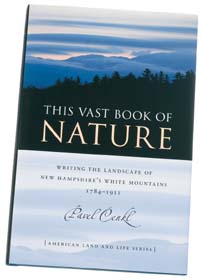
Cenkl uses two markers to frame his book: a 1785 congressional ordinance that organized and divided public land, and the Weeks Act of 1911, which designated as a national forest 70,000 acres (eventually more than 700,000) of the White Mountains. Within this time period, a variety of texts about the White Mountains reveal many different perspectives: "an inhospitable wilderness, as raw material, as the sublime, as a recreational playground, as a federally designated wilderness."
Cenkl includes readings of relatively unknown histories and consults other literature to show how this wild place inspired the competing political and cultural interests of the period. A particular tension, he says, arises between the guidebooks and travelogues written by the rising tourist class and the writings of local inhabitants. Debates rage as to whether the region should be a working forest or a tourist destination.
There is tension surrounding the physical settling of the region as well. Mount Washington, the region's highest peak, was unofficially known by its Abenaki name, Agiocochook, until Jeremy Belknap's 1784 expedition, when it was renamed, "an overt appropriation of the mountain to appeal to a political and ideological hubris," Cenkl notes. On a later expedition to the summit, a brass plaque, engraved in Latin, was nailed to a rock. Locals promptly stole it, as well as bottles of spirits that were left there, melting the metal down and presumably using the bottles for other, more practical uses. This is readable scholarship that, like the forest itself, beckons the adventurous reader.
| Overviews Books |
|
|
What Good Men Do,
by Scott Laliberte '89, This ambitious first novel weaves together the narratives of three men who mess up and then remake their lives with a deeper understanding of masculinity.
|
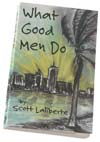 |
|
Redwork Embroidery and Needlework Traditions in Europe and America: A Look Back, A Look Ahead,
by Patricia Lynne Grace Cummings '73, This comprehensive text explains the cultural and historical contexts of redwork embroidery and provides a catalogue of designs.
|
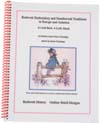 |
|
Exempt from Disclosure: The Disturbing Case About the UFO Coverup,
by Robert M. Collins '78, with Richard C. Doty and Timothy S. Cooper, The author, a physicist, considers the circumstantial evidence that points to the existence of UFOs, and presents corroborating evidence to support the idea of a governmental cover-up.
|
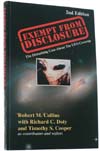 |
|
Interpreting Land Records,
by Donald A. Wilson '67G, This well-written handbook clarifies the extremely unclear world of land investigation.
|
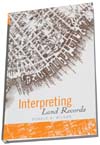 |
|
Geno: In Pursuit of Perfection,
by Geno Auriemma with Jackie MacMullan '82, Here is the inspiring life story and vision of the controversial University of Connecticut women's basketball coach, expertly shaped by Jackie MacMullan '82, who is a sports editor and columnist for the Boston Globe.
|
 |
|
The Life, Work, and Music of the American Folk Artist, Doc Watson,
by Fred Metting, UNH associate professor of English, Both biography and musicology, Metting's book traces the wide-ranging musical influences that inspire Watson, a guitarist from the mountains of North Carolina, and places him in the complex genre of American folk music.
|
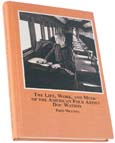 |
|
Also of Note... Surf's Up For Flynn: How a Young Girl with Autism Swims Through her Fear, by Paula Wanzer '71, |
 |
|
The Butcher, The Baker, The Candlestick Maker: An Erotic Memoir,
by Suzanne Portnoy '83, |
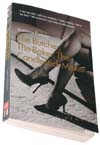 |
|
Philosophy of Technology: An Introduction,
by Val Dusek, UNH
professor of philosophy, |
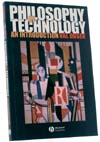 |
Anne Downey '95G, a freelance writer who lives in Eliot, Maine, received her Ph.D. in English from UNH.